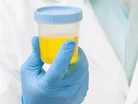Why random drug testing in the workplace is a good idea

Drug use cost Americans an estimated $193 billion in 2007 according to the National Drug Intelligence Center, with $120.3 billion due to lost productivity alone.
The National Council on Alcoholism and Drug Dependence (NCAAD) reports drug abuse costs employers $81 billion per year, and an estimated 70 percent of the 14.8 million illicit drug users in America are employed.
RELATED TOPIC: How pharma companies are using social media to learn about drugs' affects on patients
“Drug abuse in the workplace is a serious problem and it needs to stop,” saysNovus Medical Detox Center Director of Admissions Will Wesch. “Testing employees who fall under reasonable suspicion testing guidelines will lead to less abuse by employees and less loss of productivity and funds for businesses.”
According to drugabuse.gov, the average yearly cost of tobacco, alcohol and illicit drug use is over $600 billion. This total cost is due to crime, lost work productivity and healthcare.
RELATED TOPIC: Australia begins putting more focus on mental health for employees
Reasonable suspicion drug testing empowers employers by giving them the ability to test employees for substances if certain guidelines are met. Indicators that would merit reasonable suspicion drug testing can include odor of alcohol or marijuana on the body or breath, slurred speech, disorientation or confusion, inability or difficulty completing tasks, erratic or unusual behavior, and unsteady standing or walking.
The decision to conduct a drug test should be based off of current information and behavior, and behavior can be observed just before, during or just after work. However, an even more Effective method would be implementing random drug tests.
RELATED TOPIC: U.S. Employees Using Drugs Costing Businesses $200 Billion
“Random drug testing is a great preventative tool as it allows the employer to be proactive about drug use in the workplace,” says Wesch. “Instead of waiting until an accident happens to administer a test, by following the rules of random drug testing, an employer can choose who needs to take a test based on obvious signs of use.”
Wesch advises that random drug testing should be conducted by trained supervisory personnel, and a minimum of two hours of training and repeated training is recommended. The number of hours may vary state to state.
RELATED TOPIC: Is your company promoting employee wellness?
It is up to the employer to determine how to handle the situation if an employee tests positive for drugs during a random drug test. It is recommended that an employer develops the proper policies to deal with these types of situations.
Having the proper policies in place and enforcing those policies will ensure the amount of employees abusing drugs and alcohol is low or non-existent in a company.
Click here to read the latest edition of Healthcare Global magazine!





